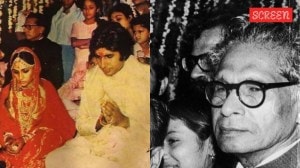Back on home stretch!
PUNE, July 16: Jabalpur, india. 1875. A British regiment tries its hand at combing billiards with the red balls of pyramids and the colou...

PUNE, July 16: Jabalpur, india. 1875. A British regiment tries its hand at combing billiards with the red balls of pyramids and the coloured balls of pool. The group has the tradition of nicknaming their recruits snookers’. When a colleague misses a shot in the new, hybrid sport, the colonel of the regiment teasingly calls him snooker’.
Around the world in 124 years. That is what the itinerary of cue sports reads like. For, unknown to most, snooker — born out of, and completing the cue sports’ trio, of billiards and pool — owes its existence to India.
A fact that recently emerged from the dust of the record books, after the famous trio — pool, billiards and snooker — saw an unprecedented growth in the past one year in the country of its birth. The sport, which was taken to and nurtured almost exclusively on foreign soil for more than a century, is today finally finding some resemblance of mass popularity’ in India. Rough estimates suggest that there are more than 600 cue tables in Pune itself, and more than 1500 people turned out for the Sprite Pool Takker that concludes in the city tomorrow.
How did it all begin?
Billiards, the forefather of pool and snooker, goes as far back as the 15th century. Diaries show that Mary, Queen of Scots, was frantic about the loss of her billiard table during her imprisonment in 1576. The sport reached the level of popularity where playwright Shakespeare incorporated mentions of it in plays like Antony and Cleopatra to be able to present a true picture of British society.
Pool, the second generation cue sport, was born during billiard’s passage through France to the US — when it divided the former between pocketed’ and pocketless’ tables. The Americans adopted the pocketless’ tables, calling the resultant play by the name of pool’.
Snooker, however, still had to wait to put in an appearance till the time that billiards and pool came to India. And once born, it soon passed the phase of being seen as nothing more than a restful diversion for billiards players, and like a true Indian forced the world to take it seriously. Australia, South Africa, Canada … the growth was phenomenal.
Championship play for snooker was inaugurated in 1916, and the first World Professional Championship was played just eleven years later in 1927. Joe Davis — who won the finals in 1927 — remained world champion till his retirement forty years later.
And by the 1950s, in India snooker had virtually disappeared. A newly liberated India was more involved in building houses and careers for the continuous wave of refugees, and it looked as if the game might pass into oblivion in its very own motherland. And by the time that the country was back on its feet, there was cricket to contend with — a situation that is still very much the order of the day.
In the rest of the world, the turning point for snooker came with the launch of a new television channel in 1969, called BBC2. The producers were hunting for a new sport to showcase, one that could fully exploit the potential of the colour screen, and snooker became the first choice for a series called Pot Black.
The programme was an unprecedented success, and as it happens with success, sponsorship money started flowing into the sport. The World Championshiop, which had quietly died out through lack of interest and funds through the 1950s and 1960s, was revived again through the medium of television.
And so quickly did the sport grow after that less than two decades later an 18.5 million strong audience shouted themselves hoarse as Dennis Taylor lifted the World Championship in 1985.
Heredity, however, cannot be extinguished totally. And Omprakash Agrawal, an Indian, proved it when he became the first non-English or non-Welsh cueist to lift the World Amateur Championship title in 1984. And since, then, the only way has been up.
It’s been a long journey. It’s been a long time. What now remains to be seen is that whether the prodigal child will be able to re-establish its roots after having charted a course across seven continents and more than a 100 years?
- 01
- 02
- 03
- 04
- 05































